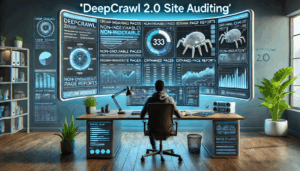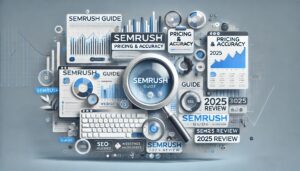
After two decades in digital marketing trenches and countless client campaigns, I’ve learned something crucial: the tools don’t make the strategist, but the right tools in skilled hands can absolutely dominate the SERPs.
Most “best SEO tools” articles read like feature lists written by people who’ve never actually moved rankings. This isn’t that.
This is a battle-tested breakdown of the SEO tools that genuinely drive results in 2025—from someone who’s used AI to scale affiliate sites, recovered penalties for Fortune 500s, and built OSINT workflows that uncover competitor intel others miss.
The Current SEO Reality Check
Search has fundamentally shifted. Google’s automated ranking systems are designed to present helpful, reliable information that’s primarily created to benefit people, not to gain search engine rankings. AI Overviews now dominate above-the-fold real estate. Zero-click searches continue climbing.
Yet most SEO professionals still approach optimization like it’s 2019.
The tools that succeed in this environment don’t just track keywords or audit technical issues. They help you understand user intent at scale, create content that satisfies both humans and algorithms, and adapt to the rapid evolution of search interfaces.
The Foundation Layer: Google’s Essential Trio
Google Search Console
Cost: Free
Reality Check: Still the single most important SEO tool
Google Search Console has become one of the most best SEO tools. Much has improved in the last couple of years. The 2024 additions—particularly the Recommendations feature—transformed GSC from a basic monitoring tool into an actionable strategy engine.
What most people miss: GSC’s Performance report contains goldmine data for content expansion. Filter by “Position 5-10” and “Impressions >1000” to find quick-win optimization opportunities.
Pro tip: Set up automated GSC exports to Google Sheets using Apps Script. I’ve caught manual penalties 48 hours faster than competitors using this approach.
Google Analytics 4
Cost: Free
The Harsh Truth: Most SEOs barely scratch the surface
GA4’s Exploration reports reveal user behavior patterns that directly inform content strategy. The “Pages and screens” dimension combined with engagement metrics shows which content formats actually drive conversions—not just traffic.
PageSpeed Insights + Core Web Vitals
Cost: Free
Critical Insight: The speed of your website has become important in SEO. And Google’s requirements for speed have become greater
Don’t just run one-off tests. Schedule monthly audits. I’ve seen sites lose 40% organic traffic after Core Web Vitals degradation during routine updates.
The Intelligence Layer: Premium Platforms That Actually Deliver
Ahrefs: The Backlink Authority
Cost: $129 per month
Best For: Competitor intelligence and link analysis
Ahrefs data quality is among the best on the market and the tool is especially popular in tracking backlinks and researching keywords. But here’s what separates professionals from amateurs: Ahrefs’ “Content Gap” analysis.
Advanced technique: Use the Content Gap tool with 3-5 direct competitors. Filter for keywords with search volume >500 where ALL competitors rank but you don’t. These represent your biggest content blindspots.
The new AI features introduced in 2024 are solid but not revolutionary. The real value remains in Ahrefs’ massive dataset and analysis capabilities.
Semrush: The All-in-One Workhorse
Cost: $140 per month
Strength: Comprehensive competitive analysis
SEMrush is a very comprehensive SEO tool that provides an overview and detailed insight into all your keywords and links. The interface can feel overwhelming, but the Keyword Magic Tool remains unmatched for large-scale keyword research.
Client-winning strategy: Use Semrush’s Position Tracking with custom tags to separate branded vs. non-branded performance. This data visualization alone justifies agency retainers.
Moz Pro: The Data Quality Champion
Cost: $99 per month
Hidden Value: Superior link metrics
Moz is strong on links data, often better than Ahrefs. Domain Authority gets criticized, but Moz’s link spam detection algorithms are incredibly sophisticated. For link prospecting in competitive niches, Moz often identifies opportunities others miss.
The AI-Powered Content Revolution
Surfer SEO: On-Page Optimization Perfected
Cost: $99 per month
Game-Changer: Real-time content scoring
Surfer identifies content gaps, adds the missing context, and fine-tunes your content around the entities and topics that matter to Google and AI assistants like ChatGPT.
However, the starting price tripled to $99 / month in recent years. For agencies managing multiple clients, the ROI still justifies the cost through improved content performance.
Advanced workflow: Create Surfer audits for your top 10 organic landing pages quarterly. I’ve seen 20-30% traffic increases from implementing these recommendations systematically.
Claude Sonnet 4 (or Latest): The Content Strategy Brain
Cost: Free tier available
Underrated for SEO: Strategic content planning
This is the leading AI content writing tool. It has multiple advantages over the current ChatGPT models if you ask me. Claude’s longer context windows make it superior for analyzing competitor content strategies and generating comprehensive content briefs.
OSINT application: Feed Claude competitor blog posts, press releases, and product pages to identify content gaps and strategic opportunities humans would miss.
Jasper AI: Scaled Content Production
Cost: Starting at $49/month
Integration Power: Use Jasper and Surfer simultaneously
The Jasper-Surfer integration creates a content production pipeline that maintains quality while achieving scale. Import the analysis and outline from Surfer SEO into Jasper. Using the SEO mode in the document editor, which is accessible via Jasper’s settings, you can implement the optimization recommendations.
The Technical Foundation: Specialized Tools
Screaming Frog SEO Spider
Cost: $259 per year
Indispensable For: Large site audits
Screaming Frog is a piece of software that you download to your computer and use to check the “onsite” health of your website. Despite some false positives, it remains the fastest crawler for identifying technical issues at scale.
Expert configuration: Set custom extractions to pull structured data, hreflang attributes, and custom meta fields. This level of technical audit sophistication separates professionals from DIYers.
SE Ranking: The Agency-Friendly Alternative
Cost: $65 starting price
Standout Feature: White-label reporting
SE Ranking provides a complete toolbox of SEO tools. All-in-one tool. The AI Overview tracking in beta addresses one of 2025’s biggest ranking factors that most tools ignore.
Free Tools That Punch Above Their Weight
Answer the Public
Cost: Free
Insight: Question-based keyword research
Answer The Public is a super free tool to find more “question keywords”. Combine this with Google’s “People Also Ask” data to identify content clusters that target the complete user journey.
Google Trends
Overlooked Strategy: Seasonal content planning
Most SEOs use Trends reactively. Smart operators use it for 12-month content calendars, identifying seasonal opportunities before competitors notice.
The 2025 SEO Tool Stack: My Recommended Configuration
Tier 1 (Essential):
- Google Search Console, Analytics 4, PageSpeed Insights
- One premium platform: Ahrefs OR Semrush (based on primary focus)
Tier 2 (Growth):
- Surfer SEO for content optimization
- Claude/ChatGPT for strategic analysis
- Screaming Frog for technical audits
Tier 3 (Scale):
- Jasper AI for content production
- SE Ranking for client reporting
- Specialized tools based on vertical needs
What Really Matters: Tool Integration, Not Collection
After testing 100+ SEO tools over two decades, I’ve learned that success comes from workflow integration, not tool accumulation.
The most effective SEO operations I’ve built use 5-7 core tools with sophisticated integration between them. Data flows from GSC to Ahrefs to Surfer to content creation to performance tracking in automated cycles.
Key insight: People-first content means content that’s created primarily for people, and not to manipulate search engine rankings. The best tools in 2025 help you create genuinely helpful content that satisfies user intent—not just check optimization boxes.
The Strategic Advantage: Beyond Features to Methodology
The companies dominating search results in 2025 aren’t just using different tools—they’re asking different questions:
- “What user problems does this content solve?” (not “What keywords does it target?”)
- “How does this integrate with our content ecosystem?” (not “Will this rank?”)
- “What unique insights can we provide?” (not “How can we optimize this page?”)
Tools are enablers of strategy, not replacements for thinking.
Your Next Move: Implementation Over Information
Stop collecting tools. Start systemizing workflows.
Pick one primary platform (Ahrefs or Semrush), one content optimizer (Surfer), and one AI assistant (Claude). Master their integration before adding complexity.
The SEO professionals winning in 2025 aren’t those with the most tools—they’re those who extract maximum value from focused toolsets applied consistently.
Remember: Google rewards helpful, reliable, people-first content. Choose tools that help you create that, not just optimize for algorithms.
The search landscape will continue evolving. But the fundamental principle remains: understand your users, create exceptional content, and use tools to scale what works.
Master that approach, and you’ll succeed regardless of which specific tools dominate the market.





